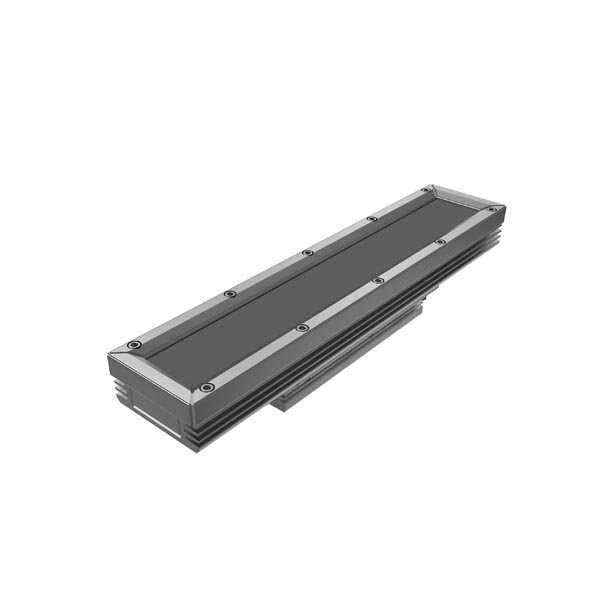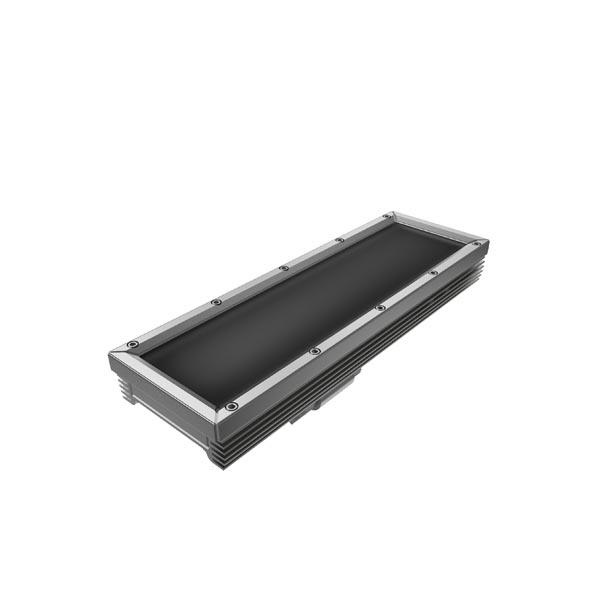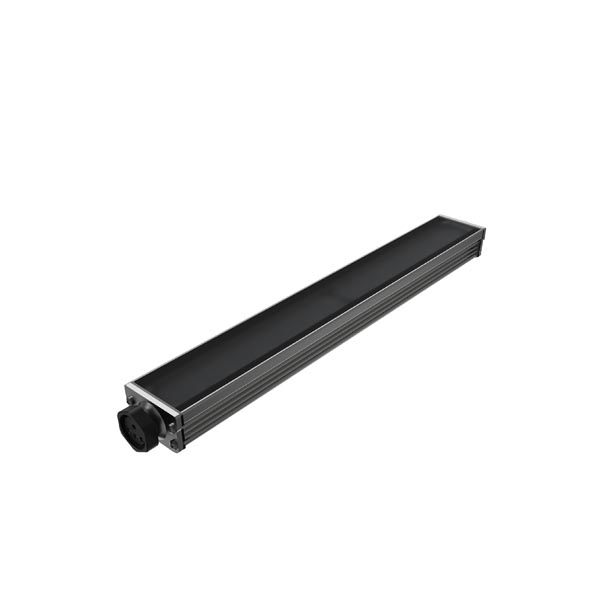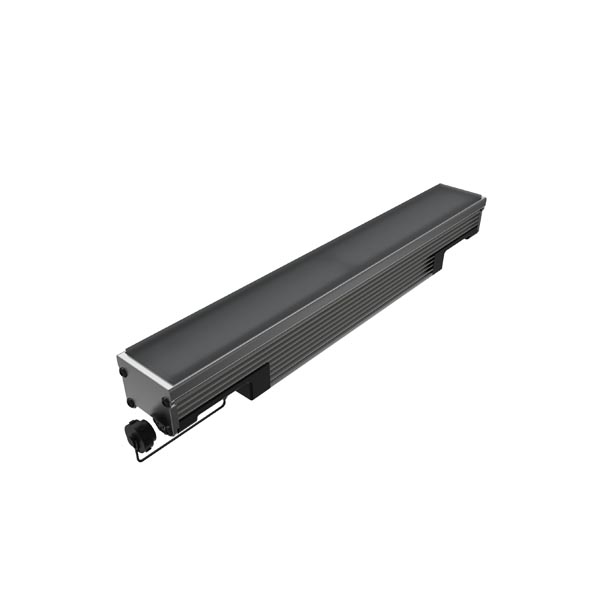Fixtures Used in Washing and Grazing Lighting Techniques
View All Wall Washing / Grazing ProductsWashing and grazing are two lighting techniques used in architectural and interior design to highlight surfaces, textures, and forms.
Both techniques involve positioning lights to create different visual effects on walls or surfaces, but they achieve distinct looks based on how light interacts with the surface.
Wall washing is a lighting technique where a surface (usually a wall) is illuminated uniformly to create a smooth, even spread of light across it. The light fixture is positioned at a distance from the wall and is angled to “wash” the surface with light. This technique minimizes shadows and gives the surface a more flat, soft appearance. The uniform light provided wall washing can make a room feel larger and more open. Wall washing is typically used in galleries, museums, offices, or modern interiors to highlight artwork, architectural features, or to create a clean, minimalist look.
Fixtures used in wall washing applications may include recessed linear downlights and linear wall washer LEDs mounted along the ceiling or wall to flood the surface with light.
Wall grazing is a technique that emphasizes the texture and depth of a surface by placing the light source very close to the surface. This creates shadows and highlights that accentuate the details, such as brick, stone, wood, or any textured material. Unlike wall washing, grazing is meant to reveal and enhance the surface’s imperfections and texture. Grazing light is perfect for adding visual intrigue to a space by drawing attention to the material’s texture such as brick, stone, concrete, or wood.
Fixtures used in wall grazing designs include many of the same as wall washing, but are positioned closer to the surface to create shadow. Both techniques are powerful tools in lighting design, used to control the mood, enhance architectural features, and draw attention to specific materials or textures.




